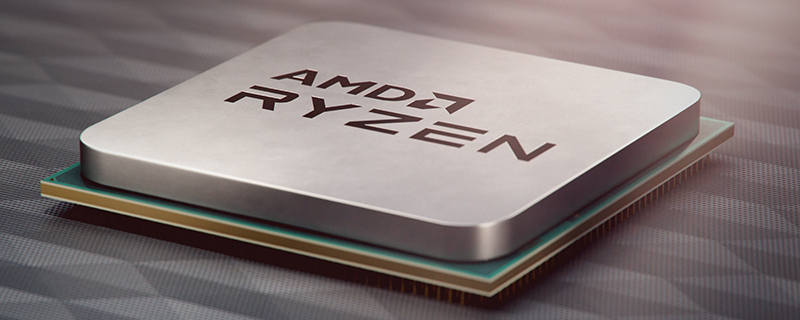AMD Ryzen 7 5800X3D Review
Conclusion
20/04/22 – As we said at the beginning we discovered that our test setup wasn’t running properly in certain circumstances. It was very annoying because so many of the results look exactly where they should have been that we took the numbers for granted. Discovering that the motherboard had arbitrarily decided to declock everything midway through the testing came as a surprise, so we have retested those results which we do from the half way point of our testing cycle. As you can see from our updated graphs the Cinebench results remain the same, but Blender has seen a massive decrease in the render time. Most importantly the gaming benefits of the Ryzen 7 5800X3D design improvements now can be seen in all of our gaming benchmarks, with both minimum and average frame rates heading northwards.
We are leaving our original conclusion as it was written for transparencies sake, but any confused disappointment at how the processor performed in particular tests can be ignored as a flaw in our motherboards BIOS, rather than indicative of the Ryzen 5800X3D itself, which is everything AMD said it would be and gets, if you’re not planning to overclock and just want high gaming results, our firm, non-caveat, recommendation. We can’t wait to see where AMD takes this idea with their forthcoming 6000 series.
The AMD Ryzen 7 5800X3D is something of a curiosity. If we had to describe it in a pithy manner we’d probably call it a proof of concept more than anything. The thing that needs to remain uppermost in your mind at all times is that this is a change in CPU design, and that change in design has placed onerous limitations on what we normally want from our processor, so if you plan on doing anything but gaming then this isn’t the solution for you. Unless of course you own an early generation, or lower in the scale, Ryzen processor and want to take full advantage of the last of the DDR4 options before AMD moves to DDR5 with Zen 4.
We’ll get the bad out of the way first. By thinning the die and attaching the new 3D V-Cache directly to the processor, AMD have also had to remove the ability to overclock either by voltage or multiplier tweaks. There is no Precision Boost Overdrive to play with. You can’t adjust your memory speeds as the Infinity Fabric runs at the speed of the DDR4 you’re using. Additionally to keep things under control the processor itself is also slightly slower than the regular Ryzen 7 5800X. That isn’t to say that it isn’t perfectly fine. It’s an 8 Core 16 Thread, 4.3 GHz CPU after all. Even keeping things locked down doesn’t stop it being able to munch through benchmarks at a reasonable rate, particularly if you’re taking the step up from a 1st Gen Ryzen CPU and dropping the 5800X3D in to a X370 motherboard or similar.
The good comes with a caveat too. The whole point of this new design is to speed up the response time, and thus FPS, of your games. It is expressly made to be best for random read requests which are the exact sort of things that games demand. Players, after all, aren’t reliable things and so pre-caching doesn’t really work in games. You’ve no idea where the player will go next, or what they’ll shoot, or anything of that nature. In those situations the fewer nanoseconds you can take supplying the required data then the faster things will flow, and that is a place that the Ryzen 7 5800X3D has been designed to be at its most comfortable. Looking at the results, we’re not sure it’s an unqualified success. It’s certainly got whiffs of success, just not snootfuls. A quick glance at the results in Shadow of the Tomb Raider show the Ryzen 7 5800X3D makes a mockery of its medium ‘on paper’ specs to top the graph. Total Warhammer II shows it’s the fastest of the 5000 series Ryzen CPUs, which is no small feat. Both of the Far Cry games are ones that should also show similar gains but, in our testing at least, it wasn’t headline worthy.
All of which means that we’re not entirely sure what to make of the latest, and likely last, addition to the famous 5000 series of Ryzen CPUs. The lack of overclocking and tweakability mean it’s not as useful to all-rounders as the regular 5800X, and whilst the gaming performance is better than other Ryzen processors if you’re solely in the world of gaming then Intel still have the upper hand. Where this probably fits best is for people who brought in to the AM4 ecosystem early and want a processor that will be a last hurrah for the DDR4 based AMD platform, in which case we think you’ll love what the Ryzen 7 5800X3D brings to the party. For everyone else, especially with the Zen 4 architecture growing closer every day, it’s probably worth waiting to see what the 6000 series offers before committing.
Like many products that revolutionise how things are designed it has glimpses of huge potential. Certainly if AMD can utilise the low latency that this design solution brings, without having to take away our boost clock and memory overclocking tools, then this could be a watershed moment in future CPU design, and for that it wins our Innovation Award.
Discuss the AMD Ryzen 7 5800X3D in our OC3D Forums.
NEW UPDATED VIDEO WITH RETESTING
OLD VIDEO




